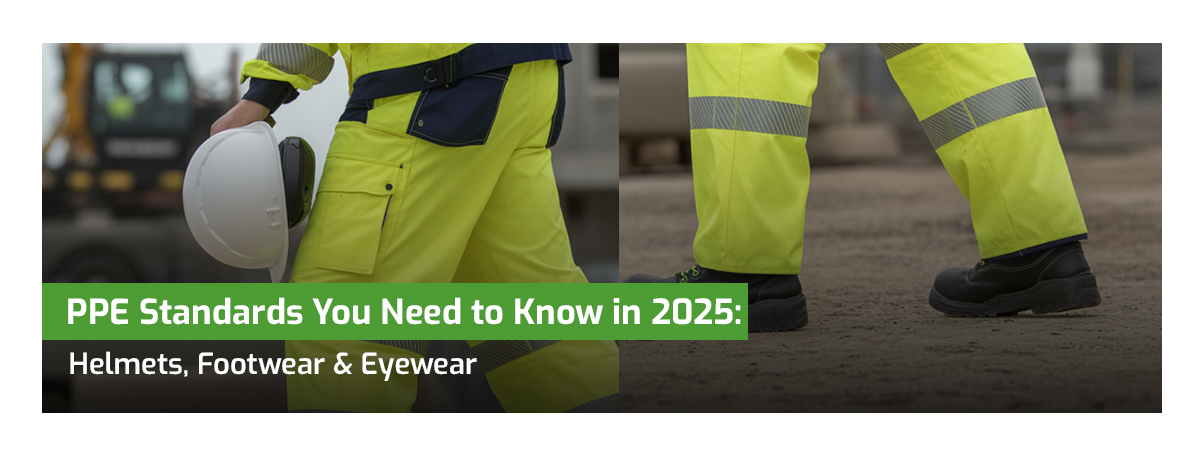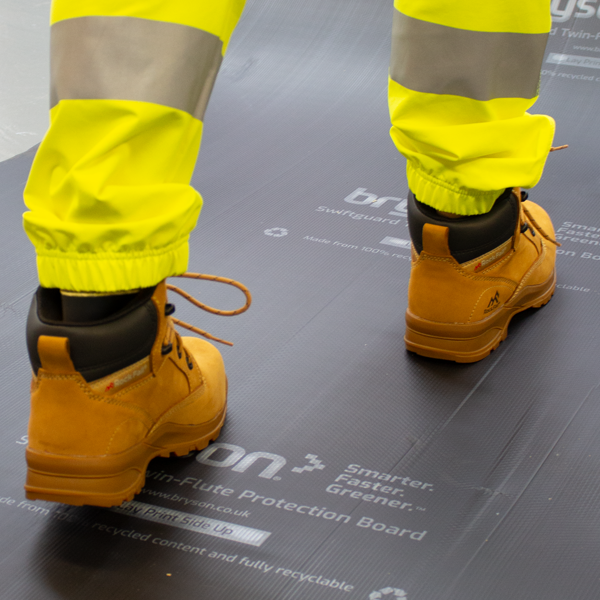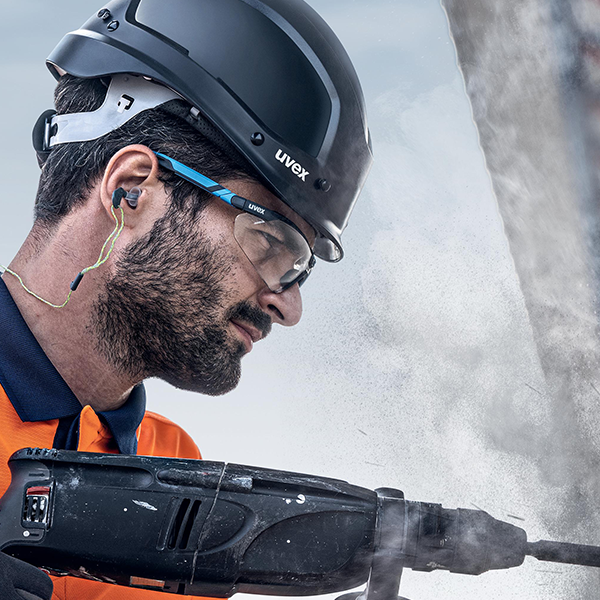
Every site has its own challenges, but one thing never changes: the need for certified protection. Regulations evolve, testing methods improve and materials advance. When those updates happen, keeping track of the latest standards becomes a full-time task for site managers and procurement teams. Luckily, we've got you covered.
At Bryson, our focus is to make this ever-changing landscape easier to understand - and easier to act on. We supply protective equipment that not only performs on site, but also meets current UK and international standards. This guide breaks down the latest certified requirements for helmets, footwear and eyewear, explaining what they mean in practice and how they affect compliance in 2025.

Safety Helmets
EN 397: The Core Industrial Standard
For most construction and industrial environments, BS EN 397:2012 + A1:2012 remains the primary safety helmet standard. Published by the British Standards Institution (BSI), it outlines performance and testing requirements for helmets used in areas where there is a risk of impact or falling objects.
To meet EN 397, helmets must pass strict tests that measure:
-
Shock absorption (how well the shell disperses impact energy)
-
Penetration resistance (how well it withstands falling objects)
-
Retention system strength (how securely the helmet stays in place)
Manufacturers may also include optional features such as resistance to extreme temperatures, lateral deformation, or electrical insulation. Our advice? Always look at the spec sheet before you buy.
EN 12492: For Height & Rope Access Work
While EN 397 helmets are designed for general construction, EN 12492 applies to mountaineering and height-access activities. The key difference lies in testing conditions. EN 12492 helmets are evaluated for side impact protection and require a chin strap that resists higher pull forces.
On most sites, EN 397-certified helmets remain the correct choice. EN 12492 is reserved for tasks where there's a genuine risk of side impact or where workers need a secure fit during rope-access or climbing work. If you're looking for them, of course we've got them.
Selecting the Right Helmet for the Job
The Health and Safety Executive (HSE) states that head protection must be provided wherever there's a risk of injury from falling or moving objects. Employers should check that helmets carry the correct standard marking before issue.
Bryson's product specialists can help identify the right option for each work environment - whether that's a standard EN 397 helmet or a height-compliant EN 12492 design.

Safety Footwear
EN ISO 20345:2022 - The Updated Framework
Footwear is another category where standards continue to evolve. The EN ISO 20345:2022 standard, published by BSI, outlines the minimum performance requirements for safety footwear used in workplaces. It covers impact resistance, compression resistance, water penetration, slip resistance, and sole durability.
Safety footwear must include a protective toe cap capable of withstanding a 200-joule impact. Depending on the environment, additional protective features are identified through classification codes such as S1, S2, S3, S6, and S7.
S7 Footwear: The Next Step in Protection
The S7 classification builds on the features of S3 footwear by adding full waterproofing to the entire boot, not just the sole.
This makes it suitable for outdoor or wet conditions such as civil engineering, groundwork, and concrete work. An S7-rated boot includes:
-
-
Protective toe cap (steel or composite)
-
Penetration-resistant midsole
-
Water-resistant upper and fully waterproof construction
-
Energy absorption in the heel
-
Slip-resistant outsole
-
HSE guidance confirms that employers must ensure safety footwear is appropriate for the risks present on site. For most modern projects, S7 footwear offers the reliability and comfort that keep workers protected during long, demanding shifts.
Transitioning from Older Footwear Standards
The 2022 update to EN ISO 20345 replaced the earlier 2011 version, introducing clearer testing and marking requirements. Older products certified under the previous version remain valid until their certification expires, but new models entering the market will carry the 2022 code.
Bryson continually reviews all PPE in its range to confirm compliance with the latest standards, so customers can be confident that every pair of boots meets current certification.

Protective Eyewear
The Shift from EN 166 to EN ISO 16321
For decades, EN 166:2001 was the benchmark for safety eyewear in Europe. It set the foundation for optical clarity, impact resistance, and field-of-vision testing. However, technology and testing have advanced significantly since then.
To reflect this, the EN ISO 16321 series was introduced by the International Organization for Standardization (ISO) and adopted by BSI in the UK. The update modernises the way eyewear is tested, making the certification process more consistent and reliable across global markets.
EN ISO 16321-1:2022 - The New Standard
The first part of the standard, EN ISO 16321-1:2022, applies to protective eyewear for occupational use. It introduces new optical and mechanical testing procedures, along with more detailed fit assessments.
One key improvement is the use of multiple headform sizes during testing, ensuring eyewear fits a wider range of users comfortably.
The transition period allows products certified under EN 166 to remain valid until their certificates expire. After that point, manufacturers must test to the new ISO 16321 standard. The change takes full effect from November 2025, with most suppliers now gradually introducing updated eyewear.
Why the Change Matters
The new testing process is more representative of real-world use. It ensures that safety glasses and goggles offer consistent protection across different face shapes, working conditions, and impact risks.
Bryson has already started stocking eyewear certified under EN ISO 16321, alongside existing EN 166 products. This means customers can continue using approved eyewear while transitioning to the new certification when ready.
Staying Ahead of Compliance
Why It's Worth Paying Attention
Using equipment tested to the correct standards isn't just a compliance exercise. It's the foundation of workplace safety. When PPE is properly certified, it performs as expected during impact, exposure, or strain.
Staying up to date also reduces downtime from injuries, avoids potential enforcement action, and builds confidence across teams. Workers trust equipment more when they know it's been tested to the latest standards.
How Bryson Supports Compliance
Bryson's technical team tracks standard updates through BSI publications, HSE guidance, and direct manufacturer partnerships. That means every product supplied is aligned with the latest version of its relevant certification.
For contractors, this removes the uncertainty of choosing between different markings or versions. Whether it's helmets marked EN 397, boots labelled EN ISO 20345:2022 S7, or eyewear tested to EN ISO 16321, Bryson ensures every product is compliant and reliable.
Need Advice? We're Here.
Need advice on PPE standards or help checking your current equipment?
Contact the Bryson team today for a product review and guidance on staying compliant.














 Loading, please wait
Loading, please wait